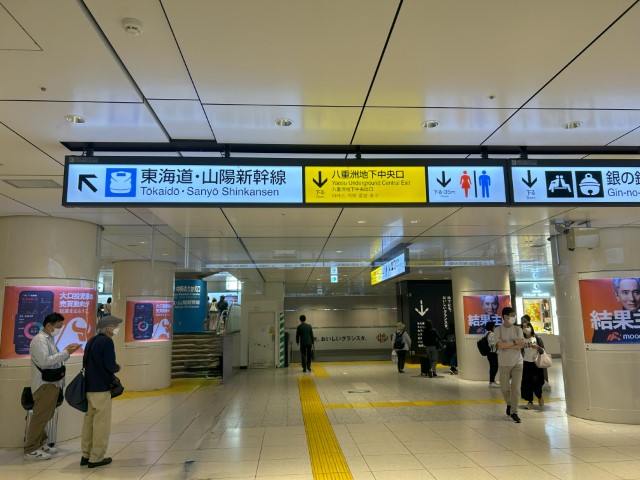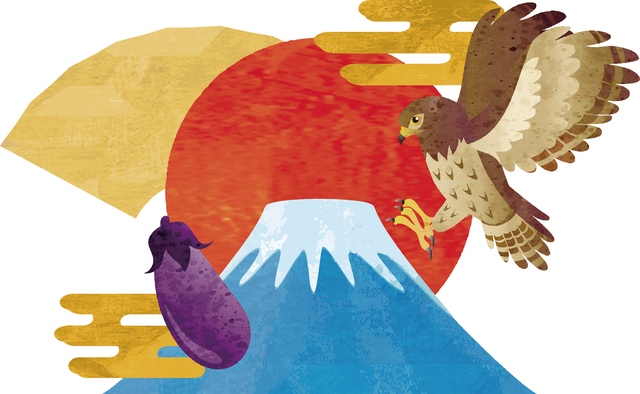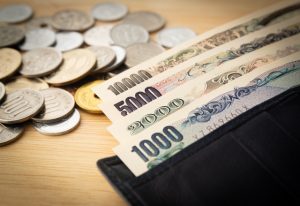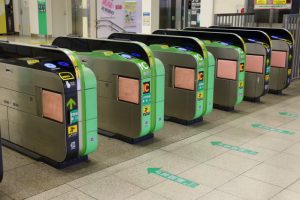Traveling from Tokyo to Kyoto by Shinkansen is a seamless and enjoyable experience, especially when using a JR Pass. Here’s how to make the most of your journey:
Traveling from Tokyo to Kyoto with a JR Pass: A Step-by-Step Guide

Step1. Find the Shinkansen Gates at Tokyo Station:
When you arrive at Tokyo Station, your first task is to find the Shinkansen gates. Look for blue and white signs, typically hanging from the ceiling. These signs will guide you to the right place, so make sure to look up!
Step 2. Locate the Ticket Counters:
Once you’ve located the Shinkansen gates, your next step is to find the ticket counters, known as “Midori no Madoguchi.” These are conveniently located nearby. If you need to reserve a seat or pick up a ticket you’ve already reserved online, this is where you should go.

Step 3. Reserve Your Seat
Shinkansen trains offer two types of seating: non-reserved ( jiyu-seki) and reserved ( shitei-seki ).
Non-Reserved Seats: These seats are available on a first-come, first-served basis. While this can be a flexible option, be aware that during peak travel times, finding an available seat might be challenging.
Reserved Seats with a JR Pass: If you have a JR Pass, you can reserve seats without paying any additional fees. Simply go to the ticket counter, show your JR Pass, and tell the staff your desired departure time. They will issue you a reserved seat ticket.
Tip for Online Reservations: If you purchased your JR Pass online, you can also make seat reservations online. This can save you time and ensure you have a seat, especially during busy travel.
Step 4. Enjoy Your Journey
After securing your reseved seat ticket, proceed through the Shinkansen gates by showing your JR Pass and reserved seat ticket to the gate attendants.
By following these steps, you can ensure a smooth and comfortable journey from Tokyo to Kyoto with your JR Pass, enjoying all the benefits of reserved seating without any extra cost.
Make sure to take in the beautiful scenery as you travel across Japan’s landscape, and enjoy the convenience and efficiency of Shinkansen service.
Enjoying the View of Mount Fuji
When traveling from Tokyo to Kyoto on the Shinkansen, Mount Fuji can be seen on the right-hand side of the train. To get the best view of this iconic mountain, make sure to sit on the right side of the train if you are heading westbound (from Tokyo to Kyoto).
Mount Fuji typically comes into view about 40 to 45 minutes after the train departs from Tokyo Station, provided the weather is clear. It is most visible between Shin-Fuji Station and Shizuoka Station.
Here’s step-by-step guide to ensure you get the best view:
1. Seat Resevation: When reserving your seat, specifically ask for a window seat on the right side of the train. If you are booking online or at a ticket counter, you can mention that you want to see Mount Fuji.
2. Timing: Pay attention to the timing of your journey. Mount Fuji is best visible during the day and in clear weather. Morning trips are often better as the mountain tends to be more visible before the afternoon clouds set in.
3. Window Seat: Ensure you have a window seat on the right side of the train. If you are not sure, you can ask the ticketing staff to assist you with selecting the best seat.
This guide provides clear instructions for foreign travelers on how to use the JR Pass for a Shinkansen trip from Tokyo to Kyoto, ensuring they make the most of the travel experience in Japan.
A little Superstition for You
In Japan, there is a traditional saying that goes, “Ichifuji Nitaka Sannasubi,” which translates to “One Fuji, Two Hawks, Three Eggplants.” This phrase represents three symbols believed to bring good fortune if seen in one’s first dream of the New Year, known as “Hatsuyume.” Let’s delve into the meanings behind these auspicious symbols.

“Ichifuji Nitaka Sannasubi”: The Symbols of Good Fortune in Japanese First Dreams
1.Mount Fuji (Fuji-san)
Mount Fuji, the tallest and most iconic mountain in Japan, symbolizes strength, stability, and natural beauty. Spotting Mount Fuji in your first dream of the year is considered extremely lucky, predicting success and prosperity in the year to come.
2. Hawk (Taka)
The hawk is a powerful bird known for its keen vision and hunting prowess. In the context of Hatsuyume, a hawk signifies ambition, sharpness, and the ability to achieve one’s goals. Dreaming of a hawk foretells a year filled with achievement and triumph.
3. Eggplant ( Nasubi)
While it may seem unusual to include an eggplant in this list, in Japanese, the word for eggplant, “nasu,” also means “to accomplish” or “to achieve.” Therefore, seeing an eggplant in your first dream suggests fruitful endeavors and the successful accomplishment of tasks in the upcoming year.
These symbols have been cherished since the Edo period and continue to hold cultural significance today. Many Japanese people still hope to see these symbols in their first dreams of the year, believing they will bring good fortune and success.
If you ever find yourself in Japan during New Year’s, remember this charming tradition and wish for a dream filled with Mount Fuji, hawks, and eggplants. It’s a delightful way to start the year with hope and positive energy.








